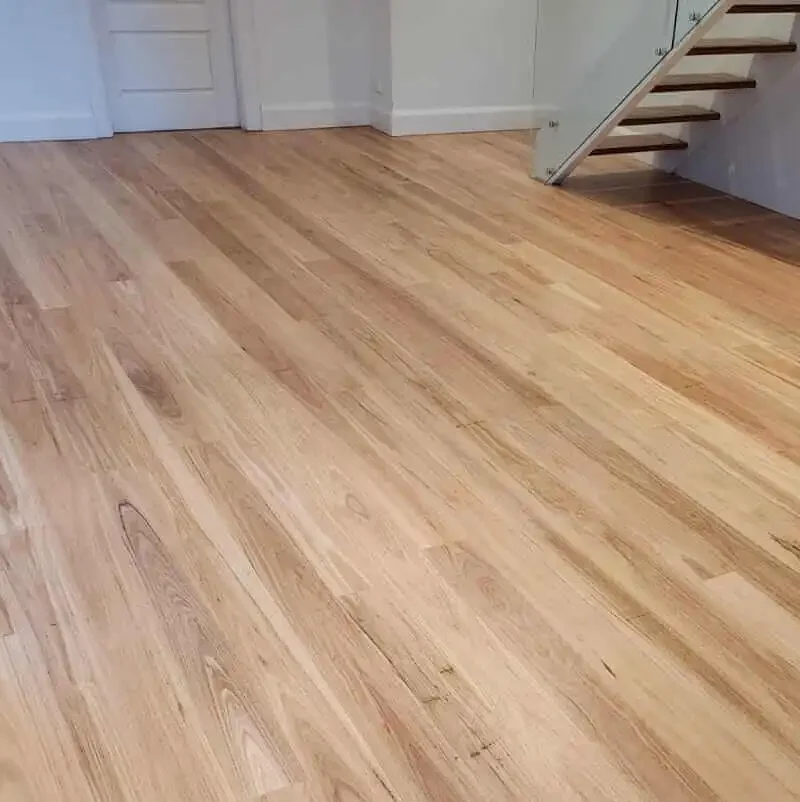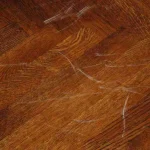- October 9, 2024
Water-based polyurethane typically takes about 2 to 4 hours to dry to the touch, allowing light handling. Full curing and optimal hardness require 24 to 48 hours before heavy use.
Water-based polyurethane has a quick drying time and allows faster project completion. It also has a low odor, making it suitable for indoor use.
Understanding the drying times of water-based polyurethane is crucial for a successful application. These drying times can vary based on several factors, including temperature, humidity, and airflow. Knowing when a coat is fully dry is essential to avoid issues like smudging, dust adhesion, or uneven finishes.
This guide will discover the advantages of water-based polyurethane. Get acquainted with some tips for the drying time of water-based polyurethane.
What Do You Need to Know About Drying Time?
Water-based polyurethane is a finish widely used in woodworking and flooring applications. It is made by dispersing polyurethane resins in water, which makes it less toxic and more environmentally friendly than solvent-based alternatives. This finish provides a durable protective layer, enhancing the appearance of wood while offering resistance to scratches, stains, and moisture.
Understanding drying times is essential for ensuring a successful application. Each stage of drying has specific characteristics and implications for your project.
Factors Affecting Drying Time
1. Temperature and Humidity
The temperature and humidity levels in your workspace greatly influence drying times. Higher temperatures accelerate evaporation. While lower humidity levels also facilitate quicker drying. High humidity can extend drying times significantly, leading to potential issues with the finish.
2. Type and Thickness of Application
The type of water-based polyurethane and the thickness of each coat also play critical roles. Thicker applications take longer to dry. But thinner layers dry more quickly and allow for a smoother finish.
3. Air Circulation
Good air circulation is vital for drying. Enhanced airflow helps moisture evaporate from the surface more rapidly, thus speeding up the drying process. Using fans or working in a well-ventilated area can make a noticeable difference.
General Drying Times
1. Initial Drying Time
- Touch Dry (2 to 4 Hours): After this period, the surface will feel dry, but it’s important not to apply pressure or handle the item yet.
- Handle Dry (4 to 6 Hours): At this stage, you can gently handle the item, but avoid any heavy use or placing items on it.
2. Recoat Time
The recommended waiting period between coats typically falls within 2 to 4 hours. But this can vary based on environmental conditions. Always refer to the manufacturer’s guidelines for the best results.
3. Full Curing Time
Optimal Hardness (24 to 48 Hours): Full curing can take 24 to 48 hours, during which the finish hardens and achieves maximum durability. It’s advisable to avoid heavy use during this period to prevent any damage to the surface.
5 Tips for Speeding Up Polyurethane Dry Time
Achieving a smooth, durable finish with water-based polyurethane often hinges on drying time. Here are some key strategies to help you speed up the process while ensuring a high-quality result.
Optimize Temperature and Humidity
Creating an ideal working environment is crucial. Aim for a temperature between 70°F and 85°F (21°C to 29°C) and maintain low humidity. Warmer temperatures promote faster evaporation. While low humidity levels prevent the polyurethane from absorbing additional moisture from the air. Together, these conditions can significantly reduce drying times.
Increase Airflow
Good air circulation is vital for quick drying. Use fans to help circulate air around your workspace. This increased airflow aids in evaporating moisture from the polyurethane. Position fans strategically to direct airflow across the surface. It enhances the drying process too.
Apply Thin Coats
Applying thinner layers of polyurethane is one of the most effective ways to expedite drying. Thinner coats dry faster and can help prevent issues like runs or drips. They contribute to a smoother finish and make them preferable for aesthetics and drying efficiency. Aim for coats that are even less than the manufacturer’s recommended thickness.
Use Heat Sources Carefully
Applying gentle heat can also help speed up drying times. Tools like a hair dryer, space heater, or heat lamp can increase the temperature of the polyurethane surface, promoting faster drying. It’s essential to avoid overheating, as excessive heat can damage the finish or lead to uneven curing. While heat helps with drying, it does not accelerate the curing process.
Utilize a Thinner
In addition to the above tips, consider using a thinner like Naphtha. This solvent evaporates faster than traditional spirits or turpentine, allowing the polyurethane to dry faster. Thinning the polyurethane with Naphtha can enhance drying efficiency. It is an excellent choice for those looking to reduce waiting times.
Oil-Based vs. Water-Based Polyurethane
Polyurethane is a popular choice for finishing wood surfaces due to its durability and protective properties. It comes in two main varieties: oil-based and water-based. Let’s compare these two types to help you decide which is best for your project. And also discover how long water-based and oil-based polyurethane takes to dry.
Drying Time
- Oil-based: Slower drying time, often requiring multiple days between coats.
- Water-based: Dries much faster, allowing for quicker application of multiple coats.
Durability
- Oil-based: Generally considered more durable, offering better resistance to scratches, dents, and wear.
- Water-based: While less durable than oil-based, modern water-based formulations have improved significantly in recent years.
Appearance
- Oil-based: Often produces a slightly warmer, amber-like tone that can enhance the natural beauty of wood.
- Water-based: Typically has a clearer finish that doesn’t significantly alter the wood’s color.
Environmental Impact
- Oil-based: Contains volatile organic compounds (VOCs) that can contribute to air pollution.
- Water-based: Generally considered more environmentally friendly due to lower VOC emissions.
Ease of Use
- Oil-based: Requires more ventilation due to VOCs and can be more difficult to clean up.
- Water-based: Easier to clean up with soap and water, and often less odor.
Cost
- Oil-based: May be slightly more expensive due to its longer drying time and potential for higher VOC emissions.
- Water-based: Generally more affordable, especially when considering the lower cost of cleaning supplies.
Here is a timetable for both types. Actual drying times may vary depending on temperature, humidity, and ventilation.
Type | Dry to Touch | Re-coat Time | Light Use | Normal Use | Full Cure |
Water-Based | 1-2 hours | 2-4 hours | 24 hours | 72 hours | 20 days |
Oil-Based | 4-6 hours | 6-8 hours | 24 hours | 72 hours | 30 days |
Choosing the Right Polyurethane
The best choice between oil-based and water-based polyurethane depends on your specific needs and preferences. If you prioritize durability and a warmer finish, oil-based might be a better option. However, if you value faster drying times, a more environmentally friendly product, and a clearer finish, water-based polyurethane could be the way to go.
Polyurethane Sheen Types
Polyurethane finishes come in various sheens, each with a unique appearance and characteristics. The sheen level you choose can significantly impact the overall look. Here’s a breakdown of the most common polyurethane sheen types:
Gloss
- Appearance: Highly reflective and shiny.
- Best for: High-traffic areas where durability and easy cleaning are essential (e.g., floors, kitchen cabinets).
- Pros: Enhances the grain and color of wood, creating a modern and sleek look.
- Cons: It can highlight imperfections in the wood surface and be shiny for some tastes.
Satin
- Appearance: Slightly less shiny than gloss, with a soft, subdued luster.
- Best for: Furniture, doors, and trim where a balance of durability and a more relaxed aesthetic is desired.
- Pros: It hides imperfections better than gloss, and offers a classic and timeless look.
- Cons: It may not be as durable as gloss in high-traffic areas.
Matte
- Appearance: Non-reflective and flat.
- Best for: Rustic or vintage-inspired projects where a natural, unpolished look is preferred.
- Pros: It creates a warm atmosphere, and hides imperfections well.
- Cons: It may be more susceptible to stains and scratches.
Semi-Gloss
- Appearance: Between satin and gloss, offering a moderate level of shine.
- Best for: Furniture, doors, and trim where a balance of durability and a slightly more relaxed look is desired.
- Pros: It offers a versatile appearance that can complement various styles.
- Cons: It may not be as durable as gloss in high-traffic areas.
Eggshell
- Appearance: A subtle sheen with a slightly textured finish.
- Best for: Furniture, doors, and trim where a soft, traditional look is desired.
- Pros: It creates a warm atmosphere, and hides imperfections well.
- Cons: It may not be as durable as gloss or semi-gloss.
Choosing the Right Sheen
The best sheen for your project depends on your personal preference, the style of the piece, and its intended use. Consider the following factors:
- Desired appearance: Do you want a shiny, reflective finish or a more subdued look?
- Durability: How much wear and tear will the finished piece endure?
- Wood grain and color: The sheen can enhance or hide the natural characteristics of the wood.
- Overall style: It should complement the design and aesthetic of your project.
By carefully selecting the right polyurethane sheen, you can create a beautiful and durable finish that will enhance the value and appearance of your project.
Conclusion
Key Points
- Drying Time: Water-based polyurethane typically dries to the touch in 2-4 hours, but full curing takes 24-48 hours.
- Factors Affecting Drying: Temperature, humidity, coat thickness, and airflow influence drying time.
- General Drying Times: Understand touch dry, handle dry, recoat time, and full curing times.
- Tips for Faster Drying: Optimize temperature and humidity, increase airflow, apply thin coats, use heat carefully, and utilize a thinner.
- Oil-Based vs. Water-Based: Compare drying times, durability, appearance, environmental impact, ease of use, and cost.
- Sheen Types: Choose the right sheen (gloss, satin, matte, semi-gloss, eggshell) based on the desired appearance, durability, wood characteristics, and overall style.
Understanding the drying time of water-based polyurethane is essential for a successful application. By following the recommended guidelines and considering factors like temperature, humidity, and coat thickness, you can ensure a smooth, durable finish on your projects. Remember, patience is key when working with water-based polyurethane. Allow for adequate drying and curing times to achieve the best possible results. Go ahead and learn more about our services concerning your flooring.
Ready to enhance your woodworking or flooring project with a durable and long-lasting finish? Choose water-based polyurethane. Contact Elephant Floors today to learn more about our high-quality products and expert advice.




